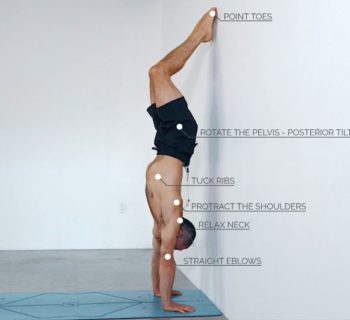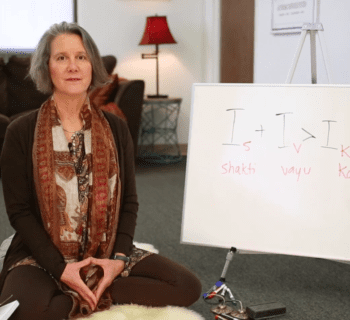When starting your yoga journey, it’s important to understand the spirit of yoga and its essence. While yoga is often associated with physical postures and flexibility, it goes beyond just physical fitness. The true spirit of yoga encompasses a holistic approach to wellness, connecting mind, body, and spirit for healing.
At its core, yoga is a spiritual practice that originated in ancient India thousands of years ago. The word “yoga” itself means union or integration, representing the harmonious integration of the mind, body, and spirit. It is a means to attain self-realization and inner peace.
The spirit of yoga is all about cultivating self-awareness, mindfulness, and a sense of inner balance. It encourages individuals to explore their inner selves, understand their thoughts and emotions, and find harmony within. It is a journey of self-discovery and self-transformation.
Yoga teaches us to be present in the moment and to cultivate a deep sense of mindfulness. Through various techniques such as breath control (pranayama), meditation, and physical postures (asanas), yoga helps us quiet the mind and find stillness within. It allows us to let go of external distractions and connect with our true selves.
The spirit of yoga also emphasizes non-judgment and compassion towards oneself and others. It teaches us to accept ourselves as we are, without comparing or competing with others. Yoga is not about achieving a perfect pose or looking a certain way; it is about embracing the process of self-discovery found within the practice. That’s why when we refer to yoga, we refer to it as a practice.
How can one deepen their practice of the spirit of yoga?
Deepening your practice of the spirit of yoga requires a dedicated and mindful approach. Here are some key steps to help you on your journey:
1. Set clear intentions: Begin by setting clear intentions for your practice. Reflect on why you are drawn to yoga and what you hope to cultivate through your practice. This will guide your efforts and keep you focused on the essence of yoga.
2. Cultivate self-awareness: Yoga is not just about the physical postures; it is a holistic practice that involves connecting with your inner self. Take time to cultivate self-awareness through meditation, breathwork, and self-reflection. This will deepen your understanding of the spiritual aspects of yoga.
3. Study yogic philosophy: Dive deeper into the teachings of yoga by studying yogic philosophy. Read books, attend workshops, or find a knowledgeable teacher who can guide you in understanding the various philosophies and traditions of yoga. This knowledge will provide a strong foundation for your practice and help you embrace its spiritual aspects.
4. Practice mindfulness: Embrace mindfulness both on and off the mat. Pay attention to your thoughts, emotions, and actions throughout the day. Practice mindfulness during your asana practice by staying present in each pose and observing your body, breath, and sensations. This will enhance your connection with the spiritual essence of yoga.
5. Develop a consistent practice: Consistency is key in deepening your yoga practice. Set aside regular time for your practice, even if it’s just a few minutes each day. Make it a priority and commit to showing up for yourself on the mat. This consistent practice will allow you to build strength, flexibility, and awareness in both your physical and spiritual being.
6. Seek guidance and support: Don’t be afraid to seek guidance and support on your yoga journey. Find a teacher or mentor who resonates with you and can provide guidance and encouragement along the way. Connect with a supportive community of fellow yogis who can offer inspiration and share experiences. The support and guidance of others can greatly enhance your spiritual growth in yoga.
7. Practice self-compassion: Remember that yoga is a journey, and everyone’s path is unique. Be kind and compassionate towards yourself as you navigate your practice. Avoid comparing yourself to others or getting frustrated with perceived limitations. Embrace your own progress and honor where you are in the present moment. Self-compassion will deepen your connection with the spirit of yoga.
8. Embrace the yamas and niyamas: The yamas and niyamas are ethical guidelines in yoga that help us live a more conscious and meaningful life. Embrace these principles in your daily life by practicing kindness, truthfulness, contentment, self-discipline, and other virtues. Integrating these principles into your life will enhance your spiritual practice and deepen your connection with the spirit of yoga.
What is the importance of the breath in the spirit of yoga?
The importance of breath in the spirit of yoga cannot be overstated. In fact, the practice of yoga is often referred to as “the union of breath and movement.” Breath is considered the life force energy that flows through our bodies, and it has a profound impact on our physical, mental, and emotional well-being.
In yoga, the breath is seen as a bridge between the body and the mind. By bringing conscious awareness to our breath, we can create a state of balance and harmony within ourselves. This is because the breath has the power to calm our nervous system, reduce stress, and increase our overall sense of well-being.
One of the main goals of yoga is to cultivate a state of mindfulness and presence. By focusing on the breath during our practice, we can bring our attention into the present moment and allow our thoughts to naturally quiet down. This can help to reduce anxiety and bring a sense of calm and clarity to the mind.
In addition to its mental and emotional benefits, the breath also plays a crucial role in our physical practice of yoga. It helps to create a flow of energy throughout the body, allowing us to move with greater ease and grace. By coordinating our breath with our movements, we can enhance our strength, flexibility, and balance.
The breath also serves as a tool for self-awareness and self-regulation. By paying attention to the quality of our breath, we can gain insights into our physical and emotional state. For example, shallow and rapid breaths may indicate that we are feeling stressed or anxious, while slow and deep breaths may indicate a state of relaxation and calmness.
Furthermore, the breath can be used as a tool to release tension and release stagnant energy in the body. Through specific breathing techniques, such as deep belly breathing or alternate nostril breathing, we can activate our parasympathetic nervous system, which promotes relaxation and restorative processes in the body.
To deepen your connection with the spirit of yoga, it is essential to cultivate a mindful and conscious relationship with your breath. Here are a few tips to help you do so:
1. Begin each practice with a few moments of focused breathing. Take a seat in a comfortable position and close your eyes. Bring your attention to your breath as it flows in and out of your body. Notice the quality of your breath and any sensations that arise. Allow yourself to fully immerse in the present moment through the rhythm of your breath.
2. Practice breath awareness during asanas. While moving through different yoga poses, pay attention to your breath. Coordinate your movements with your breath, inhaling as you lengthen or expand and exhaling as you fold or contract. This synchronicity between breath and movement will not only enhance the physical benefits of your practice but also deepen your connection to the present moment.
3. Explore pranayama techniques. Pranayama, or breath control, is an integral part of yoga. There are various pranayama techniques that can help you regulate and deepen your breath. Some popular pranayama techniques include deep belly breathing, alternate nostril breathing, and breath retention. Take the time to explore and practice these techniques, gradually incorporating them into your yoga routine. They can help you cultivate a sense of calmness, balance, and clarity.
4. Incorporate breathwork into your meditation practice. Just as the breath is central to yoga asanas, it is also an essential component of meditation. During meditation, focus on your breath as an anchor to the present moment. Observe the natural rhythm of your breath without trying to control or manipulate it. This can help calm the mind and increase your ability to stay present and focused.
5. Practice breathwork off the mat. Yoga is not just about what happens on the mat, but how we integrate its principles into our daily lives. Take moments throughout the day to pause and reconnect with your breath. It can be as simple as taking a few deep breaths before a meeting or during a stressful situation. This can help you find a sense of calm and clarity amidst the busyness of life.
Remember, the breath is always accessible to us, serving as a constant reminder to come back to the present moment. By cultivating a mindful and conscious relationship with our breath, we can enhance our yoga practice and bring more balance and harmony into our lives. So take a deep breath, and let the journey of yoga begin.
What is the purpose of meditation in the spirit of yoga?
Meditation plays a crucial role in the spirit of yoga, serving as a powerful tool to cultivate mindfulness, self-awareness, and inner peace. The purpose of meditation in yoga is to help individuals connect with their true selves, calm the mind, and ultimately attain a state of higher consciousness.
One of the primary goals of yoga is to quiet the fluctuations of the mind and achieve a sense of unity between the body, mind, and spirit. In this regard, meditation acts as a bridge that allows practitioners to delve deeper into their inner being, transcending the external distractions and focusing their attention on the present moment.
Through regular meditation practice, individuals can attain a heightened state of awareness and gain insight into their thoughts, emotions, and sensations. This self-reflection and introspection foster a deeper understanding of one’s own mind and lead to self-realization and personal growth.
Furthermore, meditation in yoga enables practitioners to cultivate a sense of inner peace and tranquility. By bringing the mind to a state of stillness and silence, individuals can detach themselves from the constant stream of thoughts and worries that often plague their daily lives. This detachment promotes a sense of calmness, relaxation, and emotional stability, allowing individuals to navigate through life’s challenges with greater ease and equanimity.
In addition to its mental and emotional benefits, meditation also positively impacts physical well-being. Numerous studies have shown that regular meditation practice can reduce stress, lower blood pressure, improve sleep, enhance concentration, and boost overall immune function. The practice of meditation in yoga involves finding a quiet and comfortable space, assuming a comfortable seated position, and focusing one’s attention on a specific object, such as the breath, a mantra, or a visual image. The goal is to cultivate a sense of presence and awareness, observing the thoughts and sensations that arise without judgment or attachment.
As beginners, it is important to start with shorter meditation sessions, gradually increasing the duration as one becomes more comfortable and experienced. Consistency is key, so aim to establish a regular meditation practice, even if it is just a few minutes a day.
To enhance the effectiveness of meditation, it can be helpful to create a conducive environment by eliminating distractions, dimming the lights, and playing soothing music or nature sounds. It is also beneficial to adopt a relaxed and non-striving attitude, letting go of any expectations or goals during the practice.
Incorporating meditation into your yoga practice can greatly enhance its benefits. By quieting the mind and cultivating mindfulness, meditation allows you to fully immerse yourself in the present moment, enhancing your ability to connect with and listen to your body. This heightened awareness enables you to practice yoga with greater precision, alignment, and intention, reducing the risk of injury and maximizing the benefits of each pose.
How does the spirit of yoga help to create inner peace?
The spirit of yoga plays a pivotal role in cultivating and nourishing inner peace. Yoga is not merely a physical exercise but a holistic practice that encompasses the mind, body, and spirit. It is through the integration of these aspects that one can tap into the profound benefits of yoga, including the attainment of inner peace.
Firstly, yoga promotes mindfulness and self-awareness. By engaging in various yoga postures (asanas), pranayama (breathing exercises), and meditation, individuals learn to become more present and attentive to their thoughts, emotions, and bodily sensations. This heightened awareness allows one to observe and detach from the fluctuations of the mind, leading to a state of inner stillness and tranquility.
Additionally, yoga encourages the release of tension and stress from the body. Through the practice of asanas, individuals stretch and strengthen their muscles, release physical blockages, and improve circulation. This physical release has a direct impact on the mind, as tension and stress often manifest as mental restlessness and unease. By alleviating physical tension, the spirit of yoga paves the way for mental calmness and serenity.
Moreover, yoga fosters a sense of connection with oneself and the world around them. The spirit of yoga emphasizes the unity of all beings and the interconnectedness of everything in the universe. By cultivating this understanding, individuals begin to experience a profound sense of inner peace and harmony. They realize that they are part of something greater than themselves and that their actions and thoughts have the power to impact not only themselves but also the world around them. This awareness brings a deep sense of purpose and fulfillment, contributing to the creation of inner peace.
In addition to these factors, the practice of yoga also stimulates the release of endorphins, which are natural chemicals in the body that promote feelings of happiness and well-being. Regular yoga practice can help individuals manage stress, anxiety, and depression, and create a more positive outlook on life.
To fully embrace the spirit of yoga and cultivate inner peace, it is important to approach your practice with a sense of openness, curiosity, and non-judgment. Allow yourself to fully immerse in the present moment, letting go of any expectations or attachments. Be patient with yourself and understand that inner peace is not something that can be achieved overnight, but rather a lifelong journey.
In conclusion, the spirit of yoga, with its emphasis on mindfulness, self-awareness, physical release, connection, and purpose, serves as a powerful tool for creating inner peace. It doesn’t matter if you can put pretty pictures of yoga on Instagram. Making beautiful shapes with your body isn’t really the point. By incorporating yoga into your daily life, you can experience a profound transformation, enhancing your overall well-being and outlook on life. So, take a deep breath, step onto your mat, and let the spirit of yoga guide you on your journey to inner peace.
Are you looking for more guidance on your yoga journey? Sign up for Omstars to get access to thousands of yoga classes in the comfort of your own home. Click here to start your subscription.
Photo by Kaupo Kalda on Unsplash










